Laura (1944)
Directed by: Otto Preminger
Written by: Elizabeth Reinhardt, Jay Dratler, Samuel Hoffenstein, Vera Caspary
Starring: Clifton Webb, Dana Andrews, Gene Tierney, Vincent Price
USA
AVAILABLE ON BLU-RAY: 14th January, from EUREKA ENTERTAINMENT
RUNNING TIME: 88 mins
REVIEWED BY: Dr Lenera, Official HCF Critic
New York City Police Department detective Mark McPherson investigates the murder of advertising executive, Laura Hunt, who’s been shot dead just inside the doorway of her apartment. His suspects are: snobby columnist Waldo Lydecker who was a mentor to Laura, her feckless fiancee Shelby Carpenter, Laura’s aunt Ann Treadwell who loves Shelby, and even Laura’s seemingly devoted maid Bessie. Mark begins to become obsessed with her.…
“Shall I or shan’t I”? were the words I kept asking myself as Laura came to its close and I went to type out my review before delving into the special features on the Blu-ray. You see, much of Laura hinges upon an event half way through that turns everything on its head, and I couldn’t decide whether to mention it or not. I don’t know how other reviewers have handled this, but in the end I decided to not describe it, not even bookended by spoiler warnings [even if one’s eyes skip a paragraph, they can still pick up on certain things], even though I feel that an in-depth write-up of the film really needs for it to be mentioned. Readers familiar with the film will hopefully understand my tactics, and newcomers will remain partly in the dark which is what’s best. if I’m vague in places, then I think you’ll appreciate why. Maybe I’ll write another review revealing all one day – after all, this is such a fascinating film that perhaps shouldn’t work nearly as well as it does but which immediately casts a spell on the viewer much like the title character does on most of the movie’s other folk. It’s both an elegant drawing room mystery and a really rather perverse romantic drama that somehow managed to sneak [among other things] no less than necrophilia under the noses of the usually uptight ‘40s censors. It rarely goes outside and largely consists of one guy questioning other people, but the intriguing characters, twisty plot, daring elements and what seems to me to be a slight mockery of familiar cliches that were already prevalent in this kind of film [without turning things into a full blown parody], make for highly seductive, chic viewing.
It was based on the first draft of a play called Ring Twice For Laura by Vera Caspary. She and director Otto Preminger began to adapt it into a film screenplay, but fell out. She finished the play with George Sklar, but was unable to find a producer willing to finance a national tour or a Broadway run, so turned it into a novel which was bought by 20th Century Fox. Studio head Darryl F. Zanuck returned from military duty to find that interim boss William Goetz had assigned Preminger, with whom he’d previously clashed, the task of developing the book for the screen with writers Jay Dratler, Samuel Hoffenstein and Betty Reinhardt. Zanuck decided that Preminger could only produce Laura, giving the job of direction to Rouben Mamoulian who rewrote the script. But Zanuck was unhappy with rushes so he reinstated Preminger as director, Preminger promptly hiring a new cinematographer and scenic designer, though this didn’t stop Zanuck from meddling, including ordering a new ending to be shot in which many of the events were all a dream of Waldo’s. However, when columnist Walter Winchell criticised it, Preminger’s finale was restored. A scene where Vincent Price sang and another where Waldo describes how he transformed Laura’s appearance and introduced her to high society were cut. The second was found and restored in 1990, but the first remains missing, a sad thing for us Price fans. The film got mixed reviews but was a hit and won Best Cinematography at the Oscars. There were two TV remakes in 1955 and 1968 while a certain film from 1981 borrowed the main plot twist – and that’s as specific as I’m going to be!
“I shall never forget the weekend that Laura died”, as the camera pans down a hallway full of expensive ornaments. It’s almost as mysterious and enticing an opening as “last year I dreamt I went to Manderley again” that begins Rebecca, and also lets you know that you’re in for classy, old school movie entertainment of the best kind. The narrator is Waldo, and initially other characters were going to narrate bits of the film. I think the decision to just have Waldo is a little problematic because he tells of events where he’s not present at, but I can understand it – after all, Waldo already had the lion’s share of the good lines so why not give him even more things to say? We go back to just after the discovery of the body of Laura, and people are being questioned. Waldo insists on accompanying Mark while he’s visiting other suspects [this film has a strange idea of police work and Mark never even goes to the station] because he wants to “study their reactions”. I wonder if it’s more because he has a ‘thing’ for Mark. Clifton Webb, who plays Waldo, was openly homosexual and doesn’t really attempt to hide this here, while Waldo and Mark’s first meeting has Waldo [who’s busy typing whilst naked in the bath] just ever-so-slightly flirt with Mark. It’s subtle but it’s there, such as when Waldo swings the typewriter shelf away so that it shields his nudity from the camera but not from the detective. We soon flash back to when Waldo first met Laura, she disturbing his lunch to get him to endorse a pen [Waldo’s initial response being “I don’t use a pen, I write with a quill dipped in venom”]. Waldo used his fame, influence and connections to advance her career while falling for her – or did he? It seems to me that he just wanted to possess and control her and didn’t really have romantic or sexual designs on her at all. He hated it when other men lusted after Laura, but it’s probably jealousy of a different kind. Whatever, Waldo’s fascinating, and Webb, a silent star making his screen comeback here who thereafter played variants on this character, makes the most of every barbed line he’s given to say.
Through more flashbacks, a web of intrigue is gradually revealed, including a strange kind of love triangle involving Waldo, Laura and Shelby [“a natural born suspect because I’m not the conventional type”, he says], a parasitic playboy whom she becomes engaged to. Seeing as Vincent Price, despite being very good here as a real sleazeball, already has just a touch of that wonderful camp about him that makes him such a joy to watch, one wonders if the Laura character ought to be another man instead. But things soon get even stranger, and I’m not talking about Shelby, who may be a gigolo, having also been seeing both a model and Laura’s aunt who keeps giving him money. For a while, Mark seems like a typical noir gumshoe – calm, collected, a heavy drinker, cynical about “dames” and prone to a few quirks like fiddling with a handheld game and sending for people to be questioned just to see their reactions. But he soon develops certain feelings for Laura in a simply extraordinary scene [which would have been cut if it wasn’t for composer David Raksin] where he walks all around her apartment, reading her letters, sniffing her aftershave, looking at her clothes, gazing at her portrait [which he intends to buy] etc, while Raksin’s score, which unusually for the time has up to now been mostly limited to source music, takes charge to evoke what he’s feeling. Need I remind you that Laura is dead. It’s often been written that Scottie Ferguson in Vertigo is a necrophile, but I disagree – he falls for a woman, then when she dies tries to remodel another woman in her image, thereby raising the first woman from the dead. But I can’t say the same for Mark. It’s perhaps a flaw that this is never addressed afterwards, but this was 1944, and one still wonders when Mark himself gets a love interest whether he’s capable of having a conventional relationship. It’s a shame that Dana Andrews doesn’t evoke much of the complexity of the character, though he does look and sound like the archetypal noir hero.
As well as Waldo and Shelby, aunt Ann and maid Bessie could also be suspects. Ann is rather pathetically infatuated with Shelby, Judith Anderson getting one really good scene near the end where we’re allowed to feel real pity for her character. And Betty may, just may [it’s hard to tell, but I wouldn’t be surprised if this was intended to be inferred] be a lesbian with feelings for her ex-employer. Meanwhile we’re often led to believe that one person could be the killer before the script throws us another possibility, and even if you’re clever enough to guess who it is, you’re still left trying to figure out the motive. Typical plot ingredients are subverted or slightly mocked. Some things seem to happen just because they would be expected to happen. “I suspect everybody and nobody” says Mark at one point which may cause a chuckle even if you’re not an Inspector Clouseau fan, and he not only gets everyone together but also invites some guests so he can point out the murderer in front of lots of people – yet the revelation of the killer isn’t actually that important. While definitely film noir in most respects, it’s not very noir in look. Yes, it’s usually raining extremely heavily outside, and you get the odd typical moment like when Mark enters Laura’s kitchen and light shines through the vertical blinds and paints black and white stripes up and down his body and the counter behind him. But much of it takes place in brightly lit rooms, with specific placing of characters, and the camera choosing to zoom in more than was typical for the time rather than cutting, being the chief emphasis of the visuals. And, moving from visuals to sound, there’s Raksin’s score with its melancholy main theme dominating with many variations. Bernard Herrmann was asked to score this, but Raksin’s approach was probably better for this particular film, which needed an easily identifiable musical hook for Laura that was closer to a popular song – and popular it certainly became.
Talking of Laura herself, she remains something of a mystery, rather ill-defined, aside from her preference for brawn over brain. I do have slight issues with the two lead performances [we could have had George Raft, Jennifer Jones and Laird Cregar in the roles of Mark, Laura and Waldo]. I’ve already mentioned Andrews, but Gene Tierney, who has criticised her own performance, doesn’t seem totally focused here and is rather ‘closed’, as opposed to her roles in films like The Ghost And Mrs Muir and Leave Her To Heaven. Then again, one could say that this is appropriate. After all, this film above all else seems to be about the way men objectify and want to ‘own’ women, so naturally we just see her from their viewpoints and never really try to understand her. It may finish with one character’s declaration of love, but the real tragedy of this is that he doesn’t even seem to know what love is. There’s a lot of meat to Laura if you want it, yet this sophisticated, elegant and biting film also effortlessly carries the air of a trifle and can also be enjoyed purely as such.
There’s no mention of this being a new restoration, so it’s probably based on the 2005 restoration used for the 20th Century Fox DVD which was transferred onto the Region ‘A’ Blu-ray – though I could be wrong, because the film looks almost spotless except for a few optical shots. Some close-ups are understandably soft, but the detail is very impressive and the level of grain is just right. A film of this vintage couldn’t really look much better. As with the DVDs and the Fox Blu-ray, this disc includes both theatrical and extended cut playback options. The movie does play better with the extra scene [which I described earlier], you get more of a sense of the relationship between Laura and Waldo. The reason for its cutting, revealed in the extras, is rather amusing.
Eureka have ported over all the previous special features except for two TV biographies of Tierney and Price, which they’ve replaced with no less than four radio adaptations of Laura and a featurette about Raksin.The first audio commentary from film scholar Jeanine Basinger with a few injections from Rakskin is often very dry, with Basinger rather mechanically reading through notes and the two obviously recorded separately. But as usual Basinger has a lot of worth to say, be it about the production or specific details like the cinematography, while the story of how Raksin came up with the main theme is one you’ll definitely remember. Commentary number two has old movie expert Rudy Behlmer give an incredibly detailed account of the making of the film, even quoting from memos sent by Zanuck. He also can’t seem to disguise the fact that he’s reading from notes, but you’ll come away thinking that there’s not much more to learn about this movie.
Now we come to the four radio adaptations of the film, all of which except for the third run for about an hour. The first, from the Lux Radio Theater, Episode 468, features Tierney, Andrews and Price in their movie roles with Otto Kruger as Lydecker, whose first name is now Paul. Host Lionel Barrymore narrates. It’s pretty similar to the film with even some of its dialogue. The second, another adaptation from the Lux Radio Theater, retains Tierney and has Victor Mature as Paul. It has exactly the same script as the previous version. The Screen Guild Theater version, which is only half an hour, features Tierney, Andrews, Webb, and David Bruce as Shelby. Here, Paul narrates, reading extracts from his report. Finally we get the Ford Theater version, starring Virginia Gilmore and John Larkin with Howard Lindsey narrating. For me, the first is the best out of the four, but they’re interesting to compare and contrast.
A Tune for Laura: David Raskin Remembers is from 2004, with a 92-year old Raksin discussing his first film composing assignment on Charlie Chaplin’s Modern Times, saying what his favourite compositions are, and playing Laura’s Theme on the piano. Short but sweet. I’ve often wondered why he never went on to becoming a major Hollywood composer after his Preminger assignments. Then we return to the Fox extras with The Obsession, where several discuss the film, the most interesting comments coming from Carl Franklin. This is also very short, but probably preferable to having lot of material rehashed from the commentaries. And then we have the deleted scene on its own with optional commentary from Behlmer about the reasons for its deletion initially.
Owners of the 2005 DVD may be unsure whether to upgrade, but I think that there’s enough of an improvement in the picture quality and enough new special features to make it worthwhile. Others should need no further encouragement. A fascinating classic that also happens to be lots of fun in an extras-laden package – the Doc Highly Recommends!
DETAILS
*1080p presentation on Blu-ray of both the extended and original theatrical versions of the film
*DTS-HD MA 1.0 Audio
*Optional English SDH subtitles
*Audio commentary by composer David Raksin and film professor Jeanine Basinger
*Audio commentary by film historian Rudy Behlmer
*Laura: The Lux Radio Theater broadcasts – Two radio adaptations of Laura from 1945 [59 mins] and 1954 [57 mins], starring Dana Andrews, Gene Tierney and Vincent Price in the 1945 version, and Gene Tierney and Victor Mature in the 1954 version
*Laura: The Screen Guild Theater broadcast – Adaptation of Laura from radio anthology series, The Screen Guild Theater, originally aired in 1945 [30 mins], starring Dana Andrews, Gene Tierney and Clifton Webb
*Laura: The Ford Theater broadcast – A further radio adaptation of Laura from 1948, starring Virginia Gilmore and John Larkin [60 mins]
*A Tune for Laura: David Raksin Remembers – an archival interview with the renowned composer [10 mins]
*The Obsession – an archival featurette on Laura [12 mins]
*Deleted Scene
*PLUS: A collector’s booklet featuring a new essay by Phil Hoad, alongside a selection of rare archival imagery


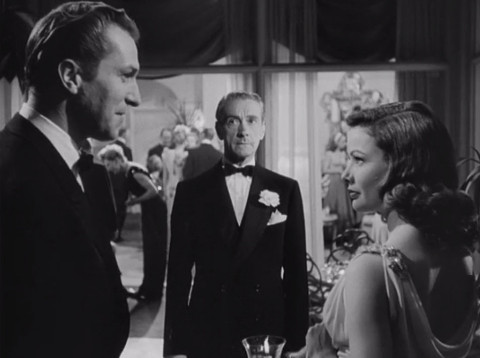
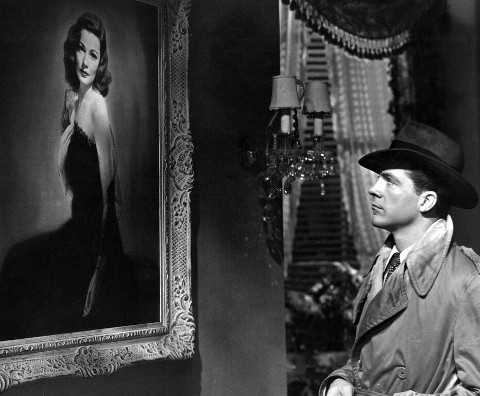



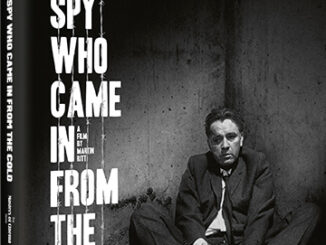
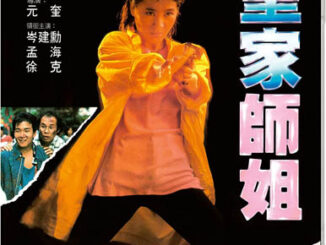
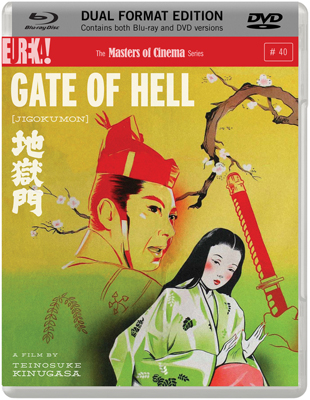
Be the first to comment